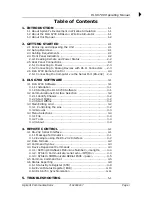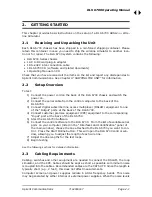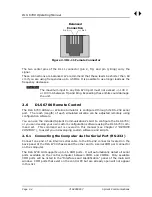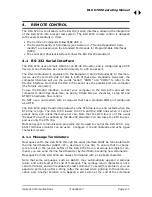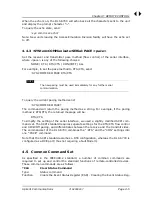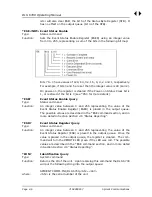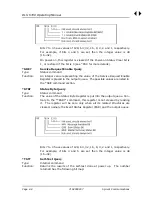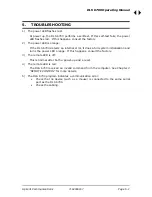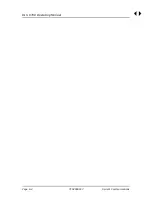
DLS 6700 Operating Manual
Spirent Communications
7104000557
Page 4-1
4.
REMOTE CONTROL
The DLS 6700 is controlled via the RS-232 (serial) interface, allowing the integration
of the DLS 6700 into a larger test system. The DLS 6700 remote control is designed
with several standards in mind:
• The Common Commands follow
IEEE 488.2.
• The Device Dependent Commands (see Section 4.4 "Device Dependent Com-
mands") are based upon the Standard Commands for Programmable Interfaces
(SCPI).
• The serial port physical interface follows the EIA RS-232 standard.
4.1 RS-232 Serial Interface
The DLS 6700 uses a female DB-25 or an RJ-45 connector, and is configured as a DCE
device. It can therefore be connected directly to a PC serial port.
The RS-232 standard is equivalent to the European V.24/V.28 standards. In this man-
ual we use the term RS-232 to refer to both of these two standards. Generally, the
computer literature will use the words “serial”, “COM1” and “COM2” to refer to the
RS-232 interface. Note that the DLS 6700 cannot use the parallel port of a computer
(the female connector).
To use the RS-232 interface, connect your computer to the DLS 6700 and set the
computer to 9600 bps baud rate, no parity, 8 data bits per character, 1 stop bit and
RTS/CTS hardware flow control.
Do NOT use a null modem with a computer that has a standard COM port configured
as a DTE.
The DLS 6700 stops transmitting data when the RTS line is low, and restarts when the
RTS line is high. The DLS 6700 lowers the CTS and the DSR lines when it cannot
accept data, and raises them when it can. Note that the RTS line is not the usual
“Request To Send” as defined by the RS-232 standard. You can leave the RTS line set,
and use only the CTS line.
Most serial port communication programs can be used to control the DLS 6700. Any
ASCII terminal emulator can be used. Configure it to add linefeeds and echo typed
characters locally.
4.1.1 Message Terminators
Messages sent to the DLS 6700 through the serial interface MUST be terminated with
the line feed character (ASCII <LF>, decimal 10, hex 0A). To ensure that no charac-
ters are left in the receive buffer of the DLS 6700 from a previous incomplete com-
mand, you can send the line feed character by itself before sending new commands.
Messages from the DLS 6700 are always terminated with a Line Feed character.
Note that some languages, such as BASIC, may automatically append a carriage
return and a line feed at the end of messages. The carriage return character is not a
valid terminator, and will invalidate the last command. To avoid this problem, you can
append a semi-colon after a string (after the quotes) when printing to the communi-
cation port. Another solution is to append a semi-colon at the end of the command
Summary of Contents for DLS 6700
Page 1: ...P N 7104000557 User Guide DLS 6700 Operating Manual Version 1 02 Nov 2004...
Page 26: ...DLS 6700 Operating Manual Page 4 12 7104000557 Spirent Communications...
Page 28: ...DLS 6700 Operating Manual Page 5 2 7104000557 Spirent Communications...
Page 30: ...DLS 6700 Operating Manual Page 6 2 7104000557 Spirent Communications...
Page 34: ...DLS 6700 Operating Manual Page 8 2 7104000557 Spirent Communications...
Page 36: ...DLS 6700 Operating Manual Page 9 2 7104000557 Spirent Communications...
Page 42: ...DLS 6700 Operating Manual Page 11 4 7104000557 Spirent Communications...
Page 46: ...DLS 6700 Operating Manual Page A 4 7104000557 Spirent Communications...
Page 48: ...DLS 6700 Operating Manual Page B 2 7104000557 Spirent Communications...



